Antenna Grounding Planes
Part of omnidirectional cellular antenna design is a ground plane - or metal that reflects signal into the antenna itself.
Many antennas have a ground plane built in, but in particular magnetic mounted antennas (often kitted with mobile vehicle boosters) require one be provided.
These antennas are specifically designed for automobile use, and being placed on the roof of a metal car or truck.
The magnet keeps them connected to the metal roof, however, what a lot of folks don't realize is that the metal roof is also serving as the grounding plane - an integral part of the antenna's performance.
Most RVs and boats don't have a metal roof - they are fiberglass, rubber or some other material.
A complaint we often hear is that a new vehicle booster an RVer just installed isn't working all that well. The first question we ask is - did you install a ground plane as detailed in the instructions that came with your booster?
If you're a member, please log in above to see your exclusive content.
Don't need a membership? Other ways you can support our work here:
-
As seen in our videos!
-
Get a FREE Month of Starlink!
And our team will get one too!
-
Get a FREE Month of T-Mobile Unlimited Data
Join the Calyx Institute, and get a bonus month - and we do too!
-
Save $20 on Visible
Verizon's prepaid phone plan, we also get a $20 credit.
-
Leave a Tip!
Send our team some beer money!!
-
Share About Us!
Link to our content, tell others about MIRC. It's Free!
It is with huge gratitude to our members for making the free unbiased educational content on our site possible. We're not sponsored, you'll find no 3rd party ads and we don't sell gear or data plans.
Our members get exclusive access to our in-depth content, classrooms, vendor discounts (that can save you more than membership!), alerts, insider info and interactive guidance. They can even book private advising sessions.
If mobile internet is an important part of your lifestyle, consider helping make MIRC possible by joining or supporting our mission.
Video Overview
We created a short video to supplement the written information on this topic:
Why is a Ground Plane Necessary
A grounding plane is a reflective metal surface that the signal from an antenna bounces off of to better meet the antenna’s design goals.
Antennas requiring ground planes are called ground-plane dependent, and having an appropriate ground plane can greatly affect performance. A dependent antenna can become effectively useless without one. You should always ensure that any antenna requiring an external ground plane – typically magnetic-mount antennas – is placed upon an effective reflective surface.
Antennas that do not require an external ground plane are called ground- plane independent antennas. These antennas have the means to reflect and focus the signal without the external ground plane being present. For most ground-plane independent antennas, having a ground plane present will still somewhat enhance signal gain, but it is not required.
Note: A ground plane for antenna purposes has nothing to do with electrical grounding.
How Much Difference Does a Ground Plane Actually Make?
Comparing the signal strength without a booster with and without a ground plane for a ground plane dependent antenna can improve the signal strength as much 5-10 dB.
For antennas that are designed with the use of ground planes - like the WeBoost Stubby - bigger ground planes tend to be better. The WeBoost Mini Magnet (stubby) was designed for mobile applications where the antenna is mounted on a vehicle with a magnet. The vehicle makes for an awesome ground plane as the following test results show.
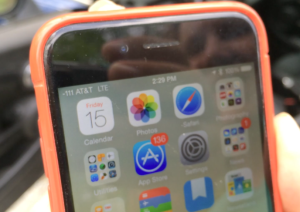
Booster Test Results
We put our iPhone into Field Test mode, and took some readings with and without a ground plane. Here are our measurements for AT&T LTE:
- With no booster at all: -111 db
- Booster w/ Ground Plane: -81 db
- Booster without a Ground Plane: -103 db
These tests were completed with the Top Signal Cobra 4G Mobile Cellular booster, and the stock rubber magnetic mounted antenna it comes with.
The difference is significant. -103 and -81 is the difference between barely loading web pages and being able to stream video.
Antenna Ground Plane Dependent Test
In this test an RF Explorer spectrum analyzer was connected to a WeBoost Mini Magnet antenna connected to a number of ground planes to evaluate the signal strength of each combination. The baseline reference setup uses no ground plane and the initial reading in the chart showing all zero's. The remaining setups show the dB signal strength improvement.
Test Setup & Results
- WeBoost Stubby with no ground plane - baseline
- WeBoost Stubby on an 8"x10" aluminum mouse pad
- WeBoost Stubby on a 11"x17" cookie sheet
- WeBoost Stubby on car hood measuring ~3'x5'

As expected adding a ground plane improves the signal strength and as the ground plane increases so does the signal strength. The longer wavelength frequencies in the 600 MHz to 800 MHz (bands 71, 12, 13, 14, 17, & 29) respond more to the size of the ground plane. This confirms the theory and need for larger ground planes for the lower frequencies.
Use a ground plane with antennas that require it!
Antenna Ground Plane Independent Test
For antennas not designed with the use of ground planes - like the dome antennas Husky, Mobility (formerly Puma), MobileMark, etc. - there is little improvement of the signal.
These antennas already incorporate a ground plane like the Husky or have antenna design elements optimized to receive the signal from the cell tower.
Adding a ground plane is often recommended but might not be worth the effort unless it is integrated in the mount or easy to incorporate.
Dome Antenna Design
In this test an RF Explorer spectrum analyzer was connected to a Pepwave Mobility 40G in a number of ground plane configurations. This antenna is designed with internal antenna elements that have a large surface area presented to the cell tower. This style antenna does not pair as well with a ground plane compared to a monopole style antenna like the WeBoost Mini Magnet.
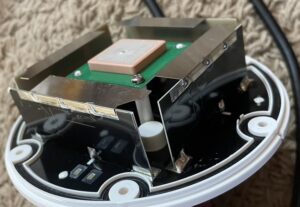
Test Setup & Results
- Pepwave Mobility 40G no ground plane
- Pepwave Mobility 40G in same orientation with a 20" diameter ground plane
- Pepwave Mobility 40G in same orientation with a 32" diameter ground plane

Adding a ground plane to this style of antenna can help to focus more of the cell tower signal into the antenna but requires a much larger ground plane with marginal improvements.
Using ground planes with dome style antennas are definitely optional.
How to Create a Ground Plane on a Non-Metal Roof
Most RV and boat roofs are not metal, so you'll have to replicate the metal of the automobile roof that these antennas were designed for. Thankfully, it's a pretty easy modification to make - just place a piece of metal on your roof, and mount the antenna to that.

An antenna's ground plane should be at least 1/4 the wavelength of the signal being broadcast for 1/4 Wave Antennas. For antennas with a design construction of 1/2 or 5/8 wavelength the math is different and will require larger ground planes.
For more on Monopole Antennas, see our guide:
To convert from a radio frequency to a physical wavelength, you divide the speed of light by the frequency.
The lower the frequency, the larger the wavelength - and thus the larger the ground plane.
The Quick Answer: Don't have the speed of light memorized?
For most cellular and WiFi transmission frequencies, a disc of some sort of metal at least 8" in diameter is generally considered sufficient and actually provides some room for error and future proofing.
Geeky Wavelength Math
If math and wavelengths aren't you're thing - you can just trust us on the above 8" recommendation and skip this part:
 The lowest frequency currently supported by cellular boosters is LTE Band 12, which runs from 699MHz to 746MHz. This works out to a wavelength of 16.9" - 15.8". Using the quarter-wavelength formula means that an effective ground plane should extend out from the center of an antenna at least 4.225" to be optimal for LTE Band 12.
The lowest frequency currently supported by cellular boosters is LTE Band 12, which runs from 699MHz to 746MHz. This works out to a wavelength of 16.9" - 15.8". Using the quarter-wavelength formula means that an effective ground plane should extend out from the center of an antenna at least 4.225" to be optimal for LTE Band 12.
Since you really only need four radials and not a continuous sheet of metal, the distance to the four corners from the center of an 8" x 8" metal sheet is 5.7" - meaning that you have plenty of ground plane for the job.
And you are actually ready for the future or for antennas not utilized with boosters too.
The FCC auctioned off the spectrum used by TV channels 30 - 51 to the cellular carriers - this opened up spectrum potentially as low as 550MHz for cellular use. T-Mobile has been utilizing Band 71 in the 600Mhz range for its long-range coverage, and more and more antennas are coming out to support this frequency.
550MHz has a quarter wavelength distance of 5.375" - which is still covered by an 8" x 8" sheet.
As frequencies get higher, the ground plane size shrinks dramatically. For example, at 1700MHz (LTE Band 4) - the quarter wavelength distance is just 1.75". And at T-Mobile's 2.5GHz LTE Band 41 the quarter wavelength distance is just 1.2".
And at the high gigahertz frequencies that are used for 5G technologies, the ground plane size required will be just a fraction of an inch.
Ground Plane Specifications
Most magnetic antenna manufacturers will specify the size required. For a single antenna an 8" diameter plate always works but is considered a minimum dimension for cellular frequencies. Moving up to a 12" diameter plate provides more flexibility in antenna placement and spacing for a mock MIMO setup.
For antennas that are designed for ground planes - bigger is reliably better.
The plate does not have to be heavy/thick and it only needs to be magnetic if you want to use the magnet on the antenna base to attach the antenna. You can also use aluminum foil or metal tape in a pinch.
The shape is also not critical: A ground plane can be rectangular or circular, as long as it meets the minimum size measure in all directions.
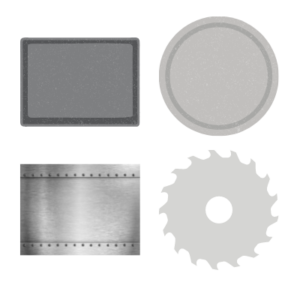 Here are some potential materials you can easily use as a ground plane:
Here are some potential materials you can easily use as a ground plane:
- Roof shingle flashing (comes precut to 8" x 12" galvanized steel, and usually under a buck at the hardware store!)
- Flat cookie sheets of the correct size
- Pizza pans
- Old circular saw blades
- Paint can lids
.. and many other things can all make good ground planes for most antennas.
Companies like MobileMustHave and ArcAntenna also sell 'official' ground planes, created for the purpose.
For mounting multiple cellular antennas near each other, separate them by at least 5" to avoid them having interference with each other (more is always better!)
Multiple antennas can share a ground plane, as long as there is a minimum of 5" of metal surrounding each antenna. For two antennas, 8" x 12" is about the minimum size to achieve this.
If you are setting up multiple antennas for use in a mock-MIMO configuration (ie. the antennas will be used with the same cellular device), having separate ground planes for each antenna and a minimum of 10" separation is ideal to achieve signal diversity.
MIMO Signal diversity is important so that the radios in the cellular modem can lock onto multiple signals. When the antennas are very close together and not isolated the radio defaults to a signal connection. Of course, independent ground planes when installing on a metal structure (such as an Airstream, bus, or van) isn't possible - so more separation is recommended to provide signal diversity.
Attaching A Ground Plane
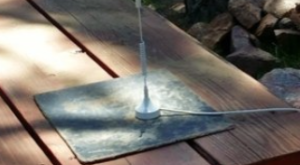
To attach a magnetic antenna to a fiberglass or rubber roof, take your metal plate and spray it with your choice of rust-resistant paint, and then simply attach it to your roof with a compatible caulk (Dicor, sealant, etc).
Then place the antenna in the center of the plate, and let the magnet hold it. Then at the side of the plate, secure the wire to the roof with a puddle of caulk.
The advantage of this method of attachment is that if a tree limb hits the antenna, it will simply flip off the mounting plate and be retained on the roof by the caulk puddle. Later, it is a simple matter to right the antenna back onto the plate.
A rigidly mounted antenna on the other hand is easily damaged by tree limbs, however, you can attach the antenna by other means (silicon, adhesive, etc) if your ground plane is not ferrous metal.
For more on antenna installations:
Installing Antennas on your Roof
Summary: A Ground Plane is Critical for Proper Performance
 A critical component of an omnidirectional antenna is a ground plane, which is basically a piece of metal that reflects signal back into the antenna itself.
A critical component of an omnidirectional antenna is a ground plane, which is basically a piece of metal that reflects signal back into the antenna itself.
Some antennas will have the plane built-in, but magnet-mounted ones typically require that one be provided. The magnetically mounted antennas are designed specifically for use in an automobile, which has a metal roof.
Since most RVs and boats do not have metal roofs, be sure to include a ground plane during installation.
Cellular antennas can be a vital part of your signal enhancing strategy to get a better signal, and thus better cellular data performance. They come in many shapes, sizes and varieties.
They can be used directly connected to your mobile hotspots or cellular embedded routers, or they might connect to your cellular booster. They come in omni-directional vs directional, single vs MIMO, and might support different frequency bands. They come in combination antennas with Wi-Fi and GPS.
But most importantly, is your installation options on your RV or boat.
So before choosing an antenna, be sure to understand all of these variables - and keep in mind that there likely isn't a single 'one size fits all' solution here. You may need to make compromises, or even have speciality antennas for challenging signal areas.
We recommend starting with our Guide to Selecting Antennas, and then moving on to our other guides addressing related topics:
Explore the Resource Center
Have Questions?
Join our 'Library Desk':
Internet for RVers & Cruisers Facebook Group
We cross post news articles and guides, and can help point you in the right direction to our content here on the resource center.
It is with gratitude to our premium members that we're able to offer our free content - and for that, they also have access to our member Q&A areas for more in-depth guidance.
Become a Member
 The MIA is our premium membership - designed for those who consider mobile internet an important part of their lifestyle.
The MIA is our premium membership - designed for those who consider mobile internet an important part of their lifestyle.
In thanks for making content like this possible, we offer a bunch of additional perks. From interactive guidance, in-depth member exclusive content, discounts, alerts, classroom and ability to book private advising sessions.
Stay In the Know
We're constantly tracking the industry and analyzing new developments for mobile travelers. If you'd like to receive updates, we offer several ways:
- Subscribe to our free monthly newsletter
- Subscribe to our News Stories RSS Feed
- Subscribe to our YouTube Channel
- Follow our Facebook Page
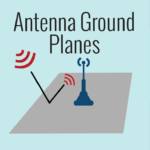
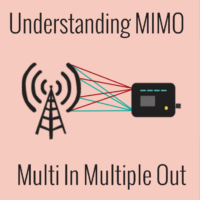
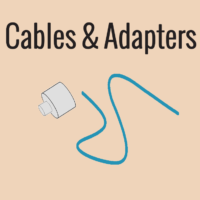

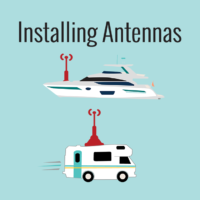
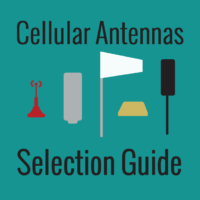
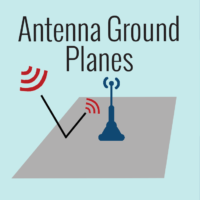
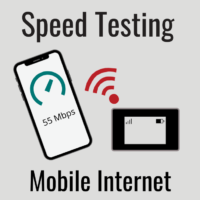

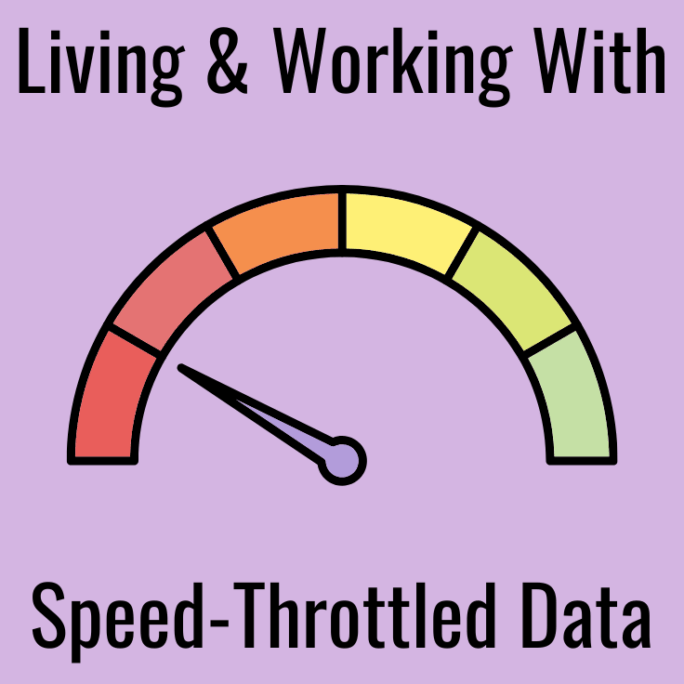







 Mobile Internet Resource Center (dba Two Steps Beyond LLC) is founded by Chris & Cherie of
Mobile Internet Resource Center (dba Two Steps Beyond LLC) is founded by Chris & Cherie of